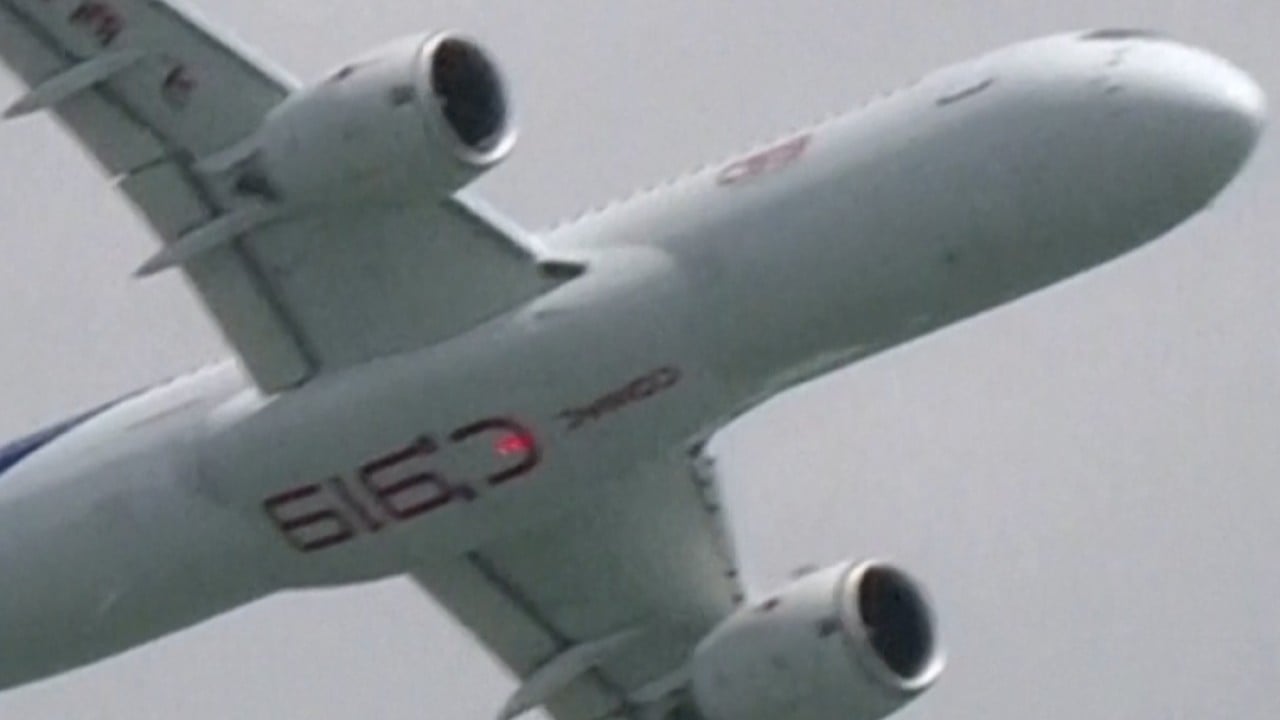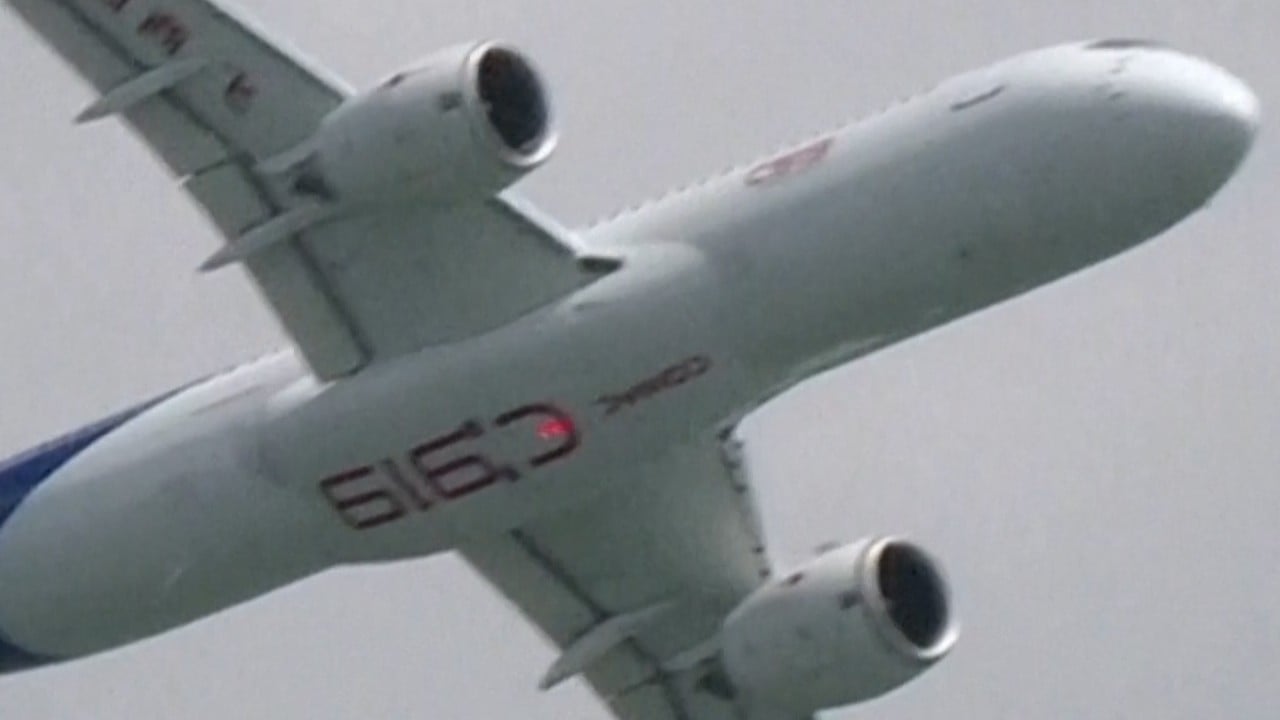China’s home-grown C919 passenger jet has a “window of opportunity” to establish itself in the global market as American aviation giant Boeing grapples with technical and safety concerns, but it still faces challenges ahead to compete with its bigger rivals, state media said.
Commercial Aircraft Corporation of China (Comac), the developer and producer of the narrowbody passenger jet, delivered its first C919 planes for Air China and China Southern Airlines on Wednesday.
It marked another milestone for the nation’s aviation industry as the C919 joined the fleets of all three major Chinese airlines.
Comac previously delivered seven C919 jets to China Eastern Airlines – the first airline to fly the aircraft, which began commercial operations in May of last year.
“The C919 has been proven to possess the conditions necessary for entering into scaled commercial operations, and it can be launched for full-scale operation in the domestic civil aviation market,” the state-owned Economic Daily said in a commentary on Sunday.
“With the current duopoly of Airbus and Boeing for civil-use aircraft, the increasing presence of the C919 is a rare breakthrough,” it added.
But the C919 still has a long way to go to gain consumers’ trust through a consistent safety record. And if it wants to compete with its bigger aviation industry rivals, Comac must develop a variety of aircraft and build a comprehensive after-sales support network.
As of Sunday, the C919s operated by China Eastern Airlines had conducted more than 3,700 flights, with accumulated safe flight time exceeding 10,000 hours and passenger traffic surpassing 500,000 people, the commentary said, citing the airline.
“Boeing has faced a series of security accidents in recent years that have significantly impacted its market position, creating a rare strategic window of opportunity for emerging competitors,” it said.
“Meanwhile, the increasing demand for environmental protection and the shortening of passenger aircraft replacement cycles have led to a growing need for airlines to update their fleets, presenting new market opportunities for later entrants.”
By 2041, global passenger jet sales will reach 42,000 aircraft with a total value of US$6.4 trillion, and more than 9,000 jets worth US$1.5 trillion will come from China, the article stated, citing industry estimates.
“China can’t give up such a big market,” it continued, calling the C919 the “pillar and pioneer” of China’s competition for the civil aircraft market.
The three Chinese airlines had placed total orders for over 300 C919 jets, marking a “good beginning” for the aircraft, the Economic Daily said.
However, it noted that it was still “just the beginning”. To compete with Airbus and Boeing, Comac must obtain international certifications, improve production capacity, reliability and the stability of supply chains, as well as increase the economic value of the aircraft.
European Union regulators made on-the-ground inspections of the C919 in July in Shanghai, and China’s civil aviation authorities have become more optimistic about receiving EU certification for the plane next year.
The Economic Daily noted that production of big aircraft leads to the development of high-end manufacturing, providing impetus for the development of other technologies.
It said that downstream customers played a key role in the process of shaping an aircraft as the experiences of passengers, detailed flight data, and responses from various segments would help improve the product.
Comac entered into a personnel exchange and training agreement with the Hong Kong University of Science and Technology in August, allowing the aircraft manufacturer to draw on the city’s international talent pool to spin up production.



